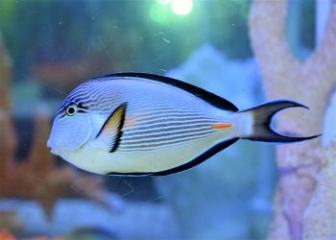Glass fish Kryptopterus vitreolus - Transparent aquarium fish
Blog | by
Glass fish (Kryptopterus vitreolus), an ornamental fish endemic to Thailand, has a transparent appearance, likes to swim in schools, and is difficult to breed in home aquariums.
Glass fish (Kryptopterus vitreolus) or ghost catfish, is an ornamental fish with a unique appearance with a crystal-clear body, swimming in schools very gracefully, gentle temperament, bringing a feeling of relaxation to the owner.
In today's article, let's learn in nice fish detail about the origin, habits, appearance and care of glass fish with beautiful aquarium fish!
Glass fish information :
| Scientific name | Kryptopterus vitreolus |
| Common name | Glass catfish, ghost catfish, ghost catfish, glass catfish |
| Class | Actinopterygii - Ray-finned fishes |
| Set | Siluriformes - Catfish |
| Surname | Siluridae - Catfish |
| Spend | Kryptopterus |
| Source | Thailand |
| Size | Standard 8cm, average is usually about 6.5cm long |
| Lifespan | 1 - 2 years |
Origin of glass fish
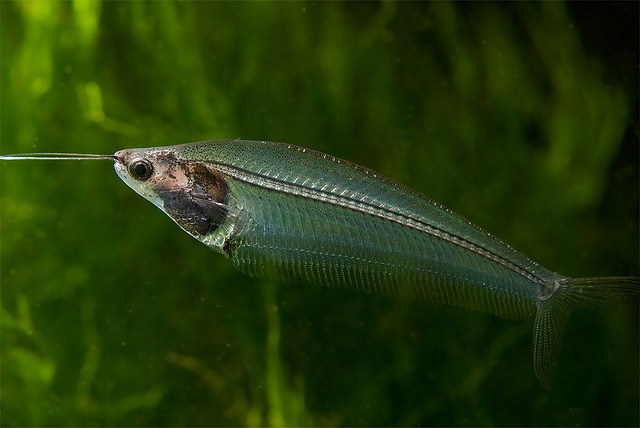
The transparent glass fish is endemic to Thailand.
Glass catfish, also known as ghost catfish, glass catfish, scientific name is Kryptopterus vitreolus. This is a fish species endemic to Thailand, they often live in the Mae Klong river basin, Chao Phraya, or the western and central provinces of Thailand.
In nature, this fish species prefers to live in small streams, slow-flowing rivers or stagnant water, with lots of aquatic plants, low light or slightly dark.
Before 2013, the glass fish was confused with Kryptopterus bicirrhis - a species of catfish that is not completely transparent. It was not until 2013 that Kryptopterus vitreolus was recognized as a separate species.
Nowadays, the number of this fish species in the wild is decreasing due to overexploitation. However, fortunately, they have been successfully bred in artificial environments in Thailand, Vietnam and some other countries in the Southeast Asian region.
The name "vitreolus" is Latin for "glassy", referring to the fish's distinctive appearance of being completely transparent.
Glass fish physical characteristics
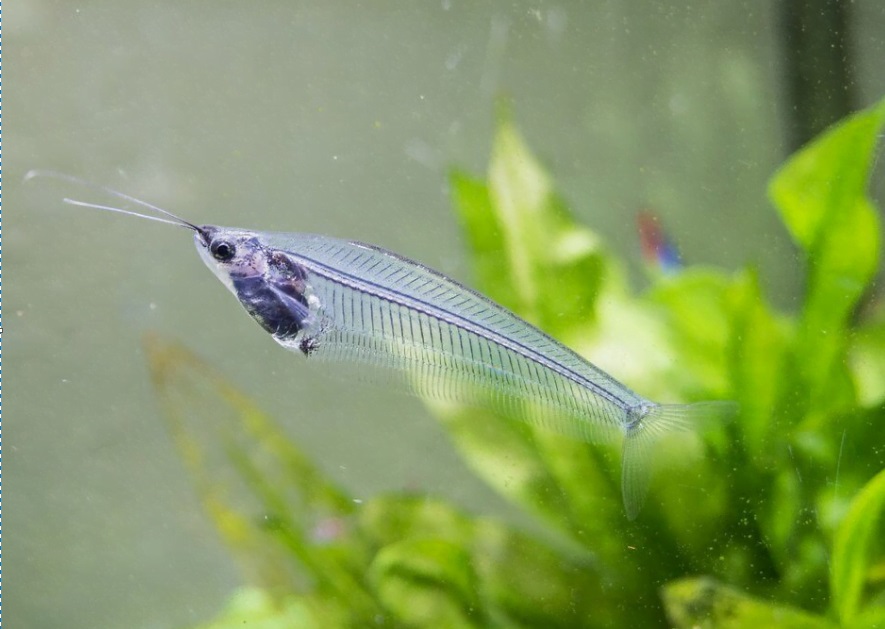
Glass fish have a crystal clear appearance.
Glass fish have a very special transparent appearance, it is also known as cheek fish. Let's learn more about the appearance of this fish.
- Completely transparent body : This is the most distinctive feature of this fish species, their body is as transparent as crystal, you can see the spine and internal organs in the body, this also helps them easily hide in the water.
- Shape : Long, thin, flat horizontally, moving smoothly in water.
- Size : 5 - 8 cm in adult fish.
- Scaleless : This fish is completely scaleless, which further enhances the transparency of its body.
- Fins : The dorsal, pelvic, and caudal fins are all translucent, and become "invisible" when they swim in water.
- Antennae : They have two long, thin, downward-pointing filaments, which are also characteristic of the catfish family. These antennae help them sense their surroundings in low-light conditions.
- Color : Although transparent, they still reflect sparkling light when swimming under the light.
Glass fish behavior
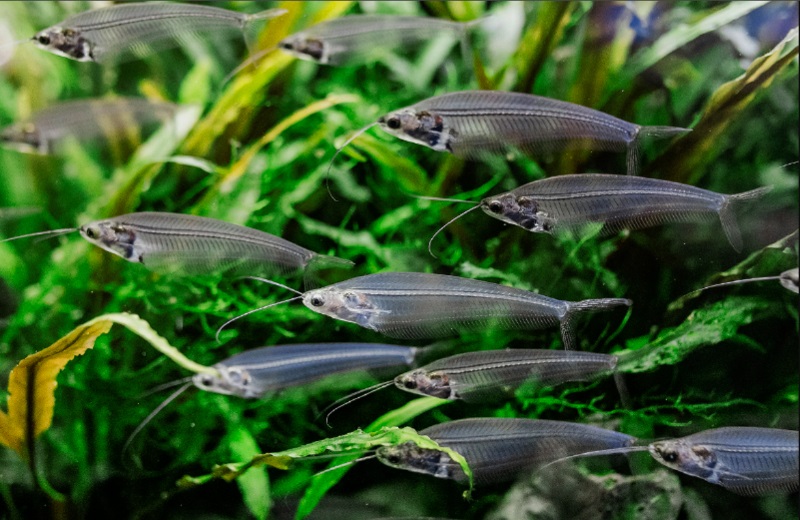
Glass fish like to swim in schools.
Let's learn in detail about the habits of glass fish to see if it has any interesting personality and habits compared to other ornamental fish.
Like to swim in groups
Glass fish are very gregarious, they like to swim in small groups, at least 5-6 individuals or more because only then do they feel comfortable and safe. Especially, when swimming in a school, they swim very uniformly, bringing an extremely eye-catching image in the aquarium.
Gentle, not territorial
Glass fish are super gentle aquarium fish, they live peacefully with all other aquarium fish in the tank, never showing signs of territorial competition, very suitable for keeping together in community aquariums.
Shy, easily stressed
True to its small, fragile appearance, this fish is very shy. If kept alone, they will often hide in hidden corners. And especially this fish is very sensitive to noise, loud noise or even too strong light.
Likes quiet environment, soft light
This fish only likes a living environment with soft or slightly dark light, clear water, lots of aquatic plants for easy hiding, does not like noise so please pay attention to place the aquarium in a quiet place and not too bright light.
Swim gracefully
Glass fish do not swim fast and strong like other ornamental fish, but they move gently and gracefully, looking as if they are floating freely in the water, extremely beautiful.
Difficult to breed in home aquarium
Nowadays, glass fish are very difficult and almost impossible to breed in home aquariums, because even with the most suitable conditions, their success rate is not high.
And currently, most of this fish species on the ornamental fish market are imported from professional farms in Thailand.
Detailed care and breeding of glass fish for beginners
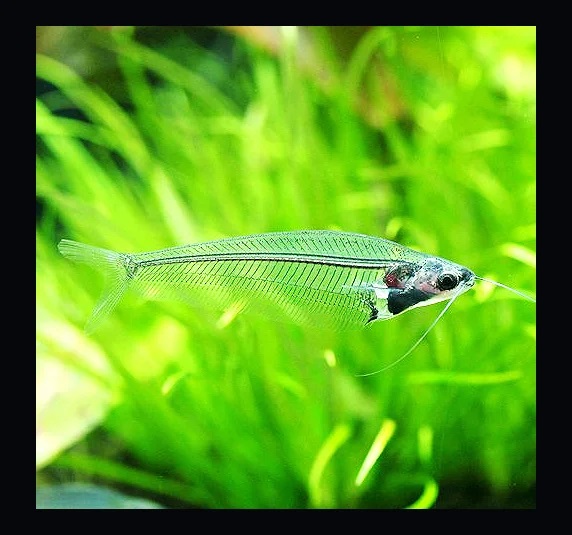
Glass fish like clean water environment with lots of aquatic plants.
Glass fish is a very popular fish in aquariums, but not everyone knows how to take care of them to keep them healthy and grow well. But don't worry, because below, we have shared super detailed instructions on how to raise and care for this fish, let's find out now.
Prepare the glass aquarium
Although glass fish are small in size, they are often kept in schools, so when you design a tank, please note the following.
- Tank volume : Minimum 40 - 60 liters, for a school of more than 5 fish. The more fish, the larger the tank needed.
- Tank cover : Should design additional cover or tank with high rim.
- Decoration : The tank floor should be covered with fine gravel, planted with aquatic plants, rocks or stones to create hiding spaces.
- Light : Use LED lights with the softest light to help the fish feel comfortable and become more beautiful.
- Water filtration system : Equipped with a light filter that does not create a strong flow.
- Oxygen aeration : Should have because fish like clear, clean, oxygen-rich water.
Water quality suitable for glass fish
For ghost fish - glass to grow well, the water in the tank needs to meet the following criteria:
- Temperature : 24 - 28 degrees Celsius.
- pH : 6.5 - 7.5
- Firmness : Soft to neutral.
- Change water . Change water every week, only change about 20% of the water in the tank at a time.
What do glass fish eat?
Glass fish are quite easy to eat, they can eat both fresh food and pellets, specifically as follows:
- Specialized fish feed for small fish, fine dry food.
- Artema, bloodworms, daphnia,...
Note :
- Feed fish only 1-2 times a day.
- Choose sinking or floating foods as fish tend to be active in the middle of the tank.
Always keep glass fish in schools.
This fish is very shy and easily stressed, so you need to raise them in groups of at least 5 or more. In addition, you can raise them with some gentle fish such as Neon Tetra , mouse fish , triangle fish, pencil fish, etc.
Common diseases in glass fish and how to treat them
Glass fish have a very fragile and sensitive appearance, so they are easily affected if the living environment is not guaranteed. Below are some common diseases in this fish species, let's learn together to know how to prevent and handle them promptly.
| Disease name | Reason | Symptom | Treatment |
| Glass fish with fungus |
Dirty water. Fish scratches lead to bacterial growth |
Fish appear white cotton-like patches on the body, Fish separate from the school, sluggish |
Isolate sick fish in separate tanks. Use specialized antifungal drugs such as Seachem, Green Malachite,... Change clean water, increase temperature to 30 degrees Celsius, aerate strongly. |
| Glass fish infected with skin parasites |
Newly purchased fish are not well quarantined. The tank is contaminated with pathogens due to poor sanitation. |
Fish appear white spots like grains of salt. Fish swim jerkily, separate from the school. Fish rub against rocks and driftwood |
Isolate sick fish. Increase the tank temperature to 30 degrees C. Use antiparasitic drugs such as Anti - Ich. Turn off the lights to help reduce stress on fish. |
| Glass fish with intestinal disease | Fish overeat, live food contaminated with bacteria |
Fish go white poop. Fish stop eating, swollen belly. Fish separate from the school, lazy to swim |
Stop feeding the fish for 1 - 2 days. Use intestinal support drugs for fish such as Bio B, Metroplex,... Change water, clean tank. |
Glass fish price list
Right below is the price list of Kryptopterus vitreolus glass fish in the Vietnamese market. Please refer to it to see how much this fish costs and whether it fits your budget!
| Glass fish | Retail price (1 - 5 pieces) | Wholesale price (10 or more birds) |
| Glass fish usually 3 - 4 cm | 10,000 - 15,000 VND/child | 6,000 - 9,000 VND/child |
| Glass fish size 5 - 6 cm | 15,000 - 25,000 VND/child | 11,000 - 16,000 VND/piece |
| Combo of 10 max size | 80.00 - 130.000 VND/piece |
Beautiful glass fish pictures
Please also admire some super beautiful pictures of schools of glass fish shining in aquariums to understand why they are so loved by aquarium hobbyists.
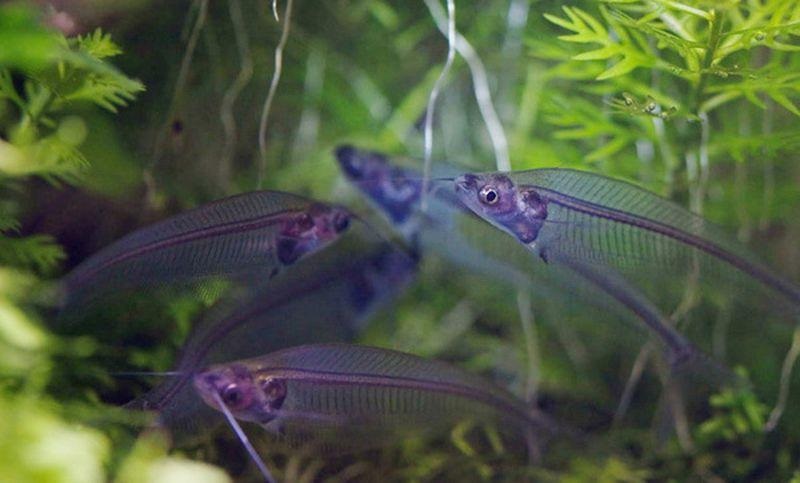
Transparent glass fish in the aquarium.

A crowded school of glass fish.
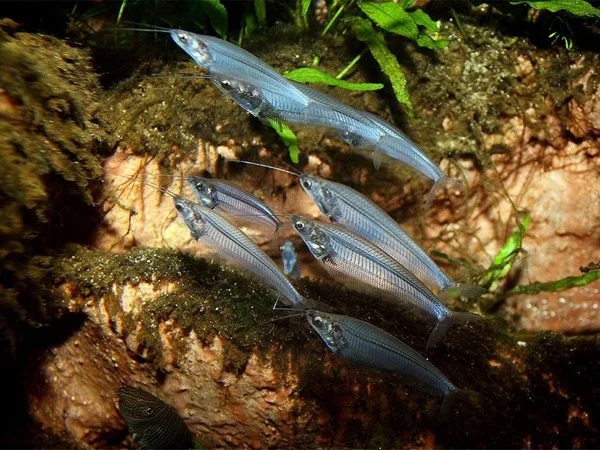
Glass fish prefer to live in dark light conditions.

Two glass fish are swimming close to the bottom.
Thus, through the above article, nicefish.net has shared with you all the information related to glass fish . This is indeed a fish species with a unique appearance with a crystal-clear body, swimming gracefully, gentle, affordable price, indeed a perfect choice for aquariums.
Don't forget to visit our Blog section to learn more about other aquarium fish in this vast aquatic world!
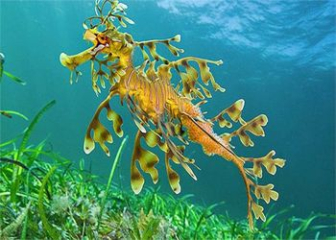
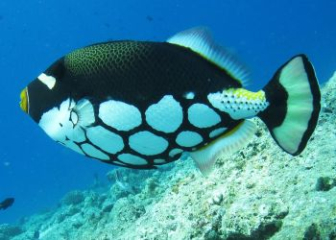
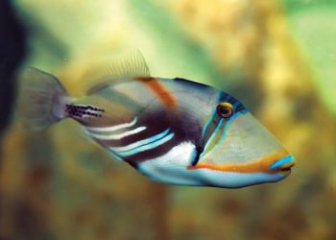
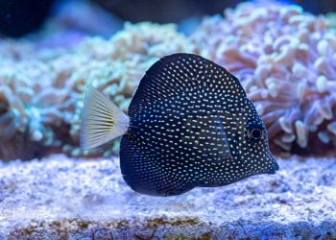
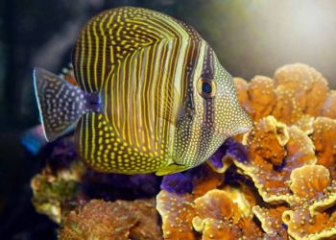
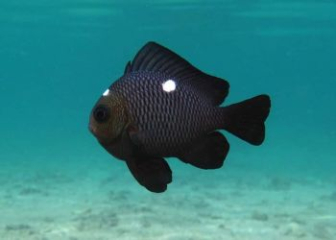







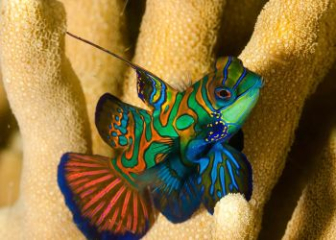

_350x250.jpg)


